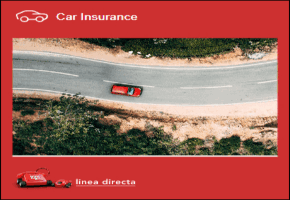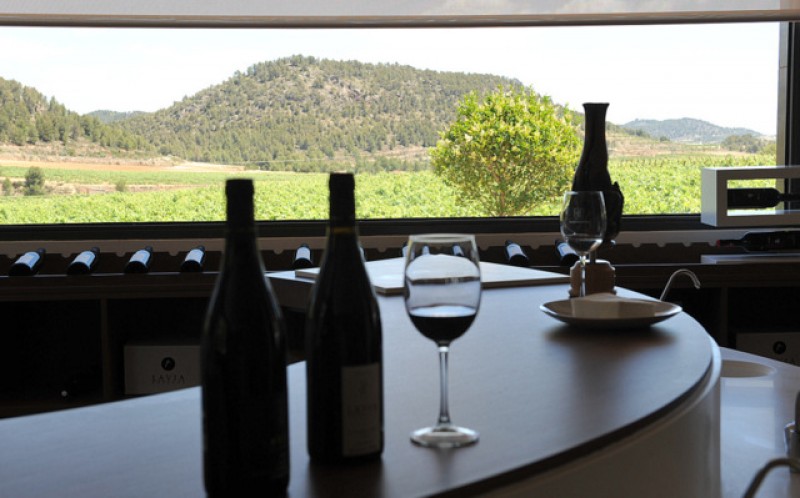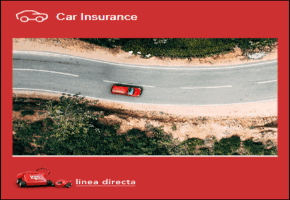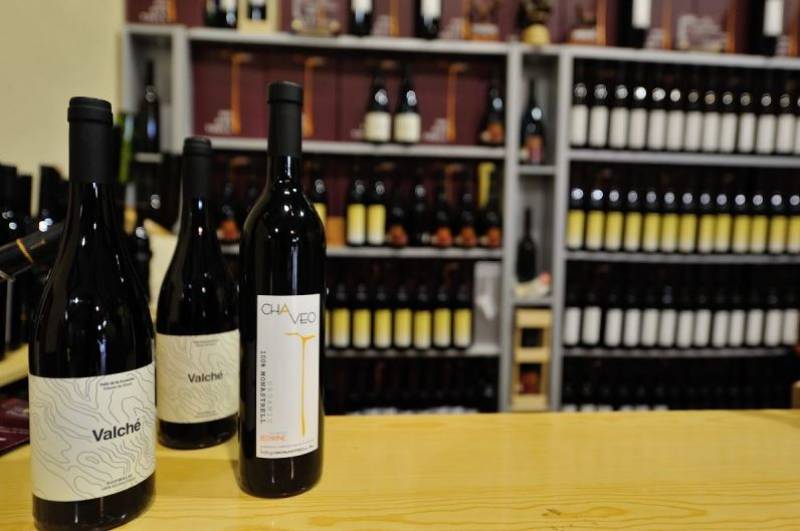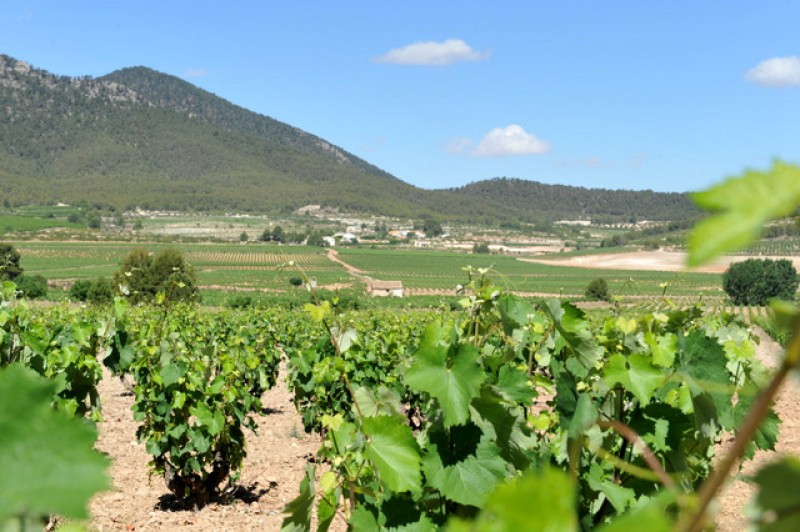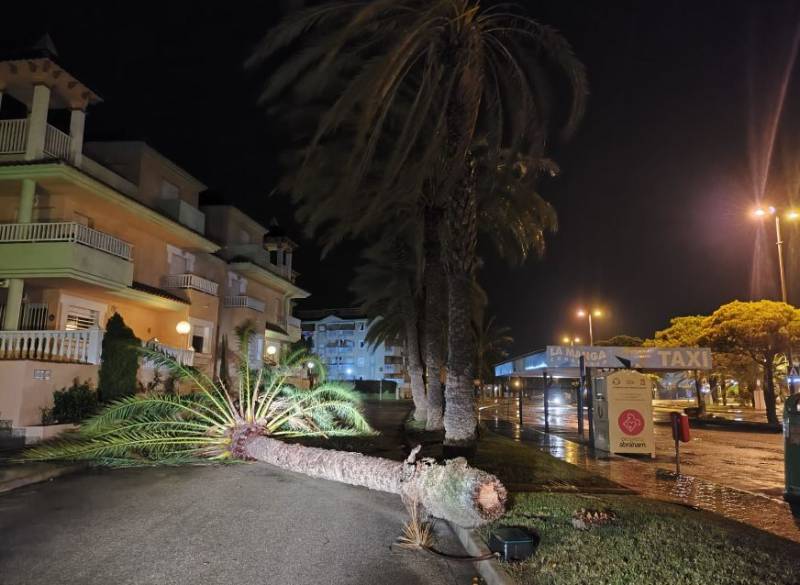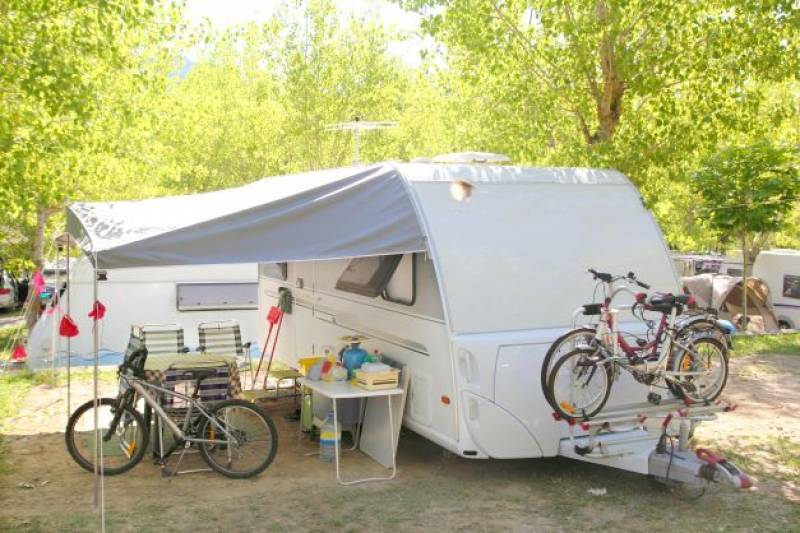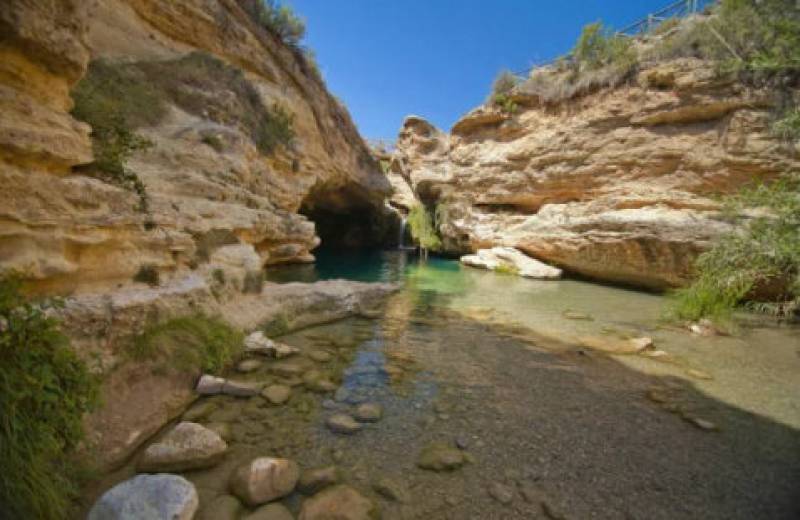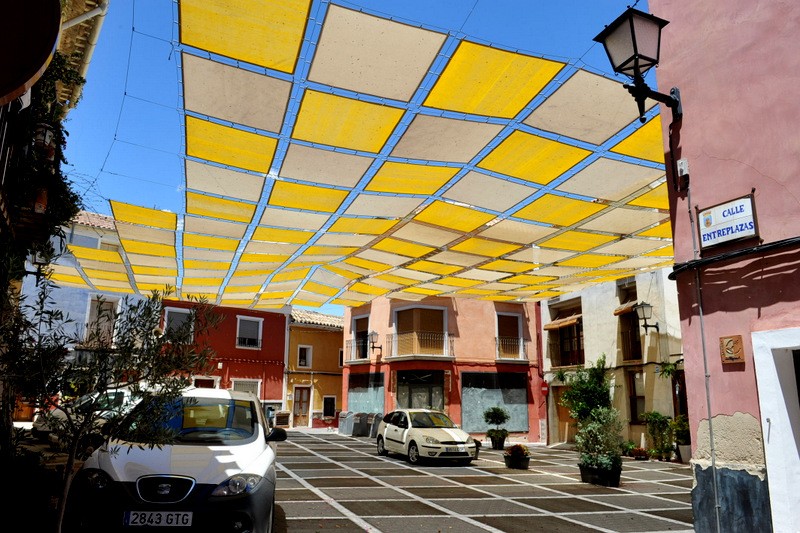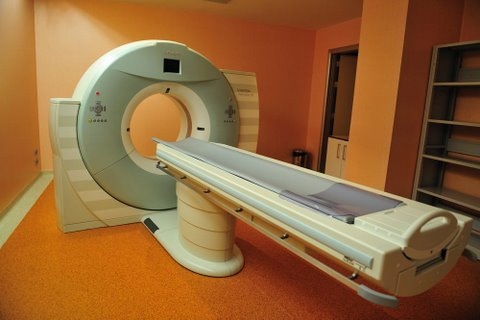- Region
- Águilas
- Alhama de Murcia
- Jumilla
- Lorca
- Los Alcázares
- Mazarrón
- San Javier
-
ALL AREAS & TOWNS
- AREAS
- SOUTH WEST
- MAR MENOR
- MURCIA CITY & CENTRAL
- NORTH & NORTH WEST
- TOWNS
- Abanilla
- Abarán
- Aguilas
- Alamillo
- Alcantarilla
- Aledo
- Alhama de Murcia
- Archena
- Balsicas
- Blanca
- Bolnuevo
- Bullas
- Cañadas del Romero
- Cabo de Palos
- Calasparra
- Camping Bolnuevo
- Campo De Ricote
- Camposol
- Canada De La Lena
- Caravaca de la Cruz
- Cartagena
- Cehegin
- Ceuti
- Cieza
- Condado de Alhama
- Corvera
- Costa Cálida
- Cuevas De Almanzora
- Cuevas de Reyllo
- El Carmoli
- El Mojon
- El Molino (Puerto Lumbreras)
- El Pareton / Cantareros
- El Raso
- El Valle Golf Resort
- Fortuna
- Fuente Alamo
- Hacienda del Alamo Golf Resort
- Hacienda Riquelme Golf Resort
- Isla Plana
- Islas Menores & Mar de Cristal
- Jumilla
- La Azohia
- La Charca
- La Manga Club
- La Manga del Mar Menor
- La Pinilla
- La Puebla
- La Torre
- La Torre Golf Resort
- La Unión
- Las Palas
- Las Ramblas
- Las Ramblas Golf
- Las Torres de Cotillas
- Leiva
- Librilla
- Lo Pagan
- Lo Santiago
- Lorca
- Lorquí
- Los Alcázares
- Los Balcones
- Los Belones
- Los Canovas
- Los Nietos
- Los Perez (Tallante)
- Los Urrutias
- Los Ventorrillos
- Mar De Cristal
- Mar Menor
- Mar Menor Golf Resort
- Mazarrón
- Mazarrón Country Club
- Molina de Segura
- Moratalla
- Mula
- Murcia City
- Murcia Property
- Pareton
- Peraleja Golf Resort
- Perin
- Pilar de la Horadada
- Pinar de Campoverde
- Pinoso
- Playa Honda
- Playa Honda / Playa Paraíso
- Pliego
- Portmán
- Pozo Estrecho
- Puerto de Mazarrón
- Puerto Lumbreras
- Puntas De Calnegre
- Region of Murcia
- Ricote
- Roda Golf Resort
- Roldan
- Roldan and Lo Ferro
- San Javier
- San Pedro del Pinatar
- Santiago de la Ribera
- Sierra Espuña
- Sucina
- Tallante
- Terrazas de la Torre Golf Resort
- Torre Pacheco
- Totana
- What's On Weekly Bulletin
- Yecla


- EDITIONS:
 Spanish News Today
Spanish News Today
 Alicante Today
Alicante Today
 Andalucia Today
Andalucia Today
article_detail
Bullas Wine Route: Bodegas Lavia
Bodegas Lavia, a picturesque vineyard and winery on the Bullas Ruta del Vino
This D.O. Bullas vineyard is located at 800 metres above sea level
Bodegas Lavia is one of the wineries on the Bullas wine route, offering visitors an opportunity to see the vineyards where the grapes are grown and the production plant where the wines of Lavia, Lavia + and Finca Paso Malo are produced, as well as tasting the end result.
Bodegas Lavia is located in the area known as Venta del Pino, a particularly attractive part of the countryside between Bullas and Cehegín at an altitude of 800 metres above sea level. This altitude ensures that in all but the most extreme conditions there is a considerable difference between daily maximum and minimum temperatures, which is important in providing ideal conditions for the grapes to mature correctly.
The area is also higher than the town of Bullas itself and there is a marked difference between the temperature in the two locations, often as much as six degrees, creating ideal conditions for viniculture.
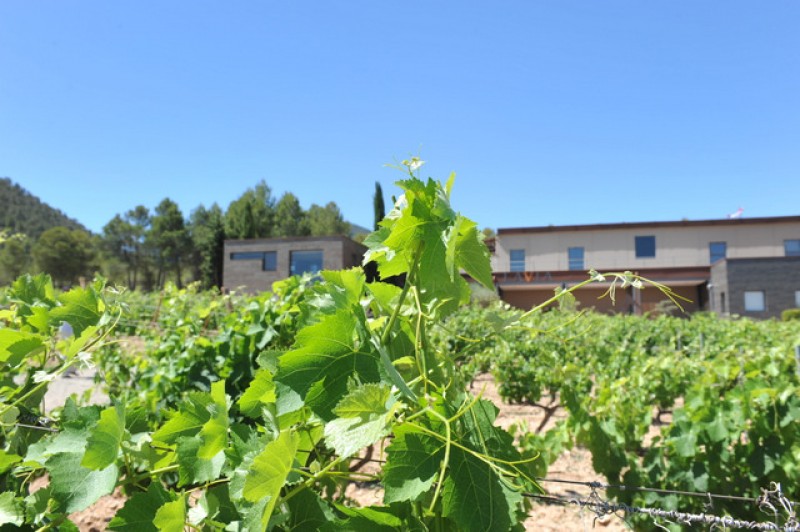
In all there approximately 28,000 vines here, with the dominant variety being Monastrell on the grounds that it is particularly suitable for the warm summer climate of the Region of Murcia and the volume of water available . Should the climate in Spain continue to get warmer it is thought that the altitude of the Lavia winery and underground water aquifers will enable the vines, some of which are over 40 years old, to thrive and remain productive in conditions which would be untenable for other varieties.
Underground water supplies ensure that the vines of Lavia survive drought conditions, with the oldest plants having the deepest roots and therefore making the most of the water table in this area. Monastrell vines can easily reach 100 years old, with roots as much as 20 metres deep, enabling them to take full advantage of any moisture in the soil and ensuring that the grapes grown here have a concentrated flavour and no surplus water content. As a result, Monastrell vines are not irrigated.
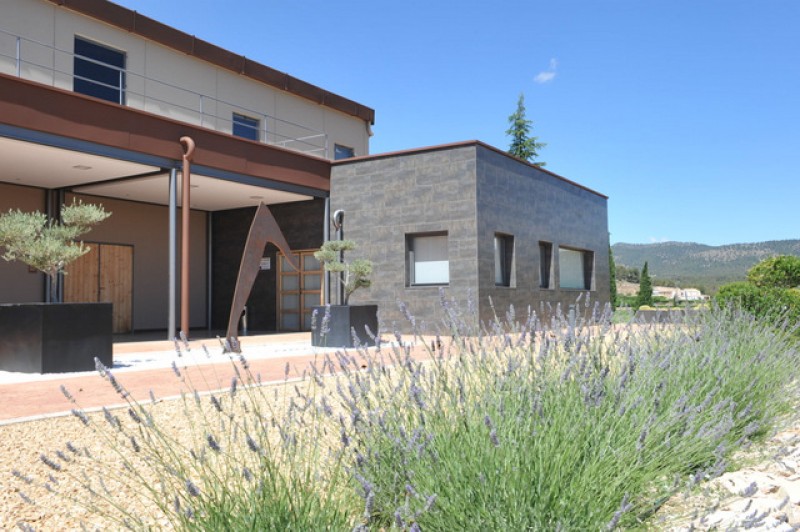
The twelve hectares of vineyards are used principally to grow Monastrell vines in “copa” form, which, after harvesting, are reduced to a height of no more than a metre. There are also lesser quantities of Syrah grapes on one side of the valley occupied by the vineyard, and at the far end of the plantation (seen from the winery itself) is the area known as “Paso Malo”.
The Paso Malo is at a slightly higher altitude than the rest of the vines, and it is here that the grapes for the most prestigious of the winery’s products are cultivated.
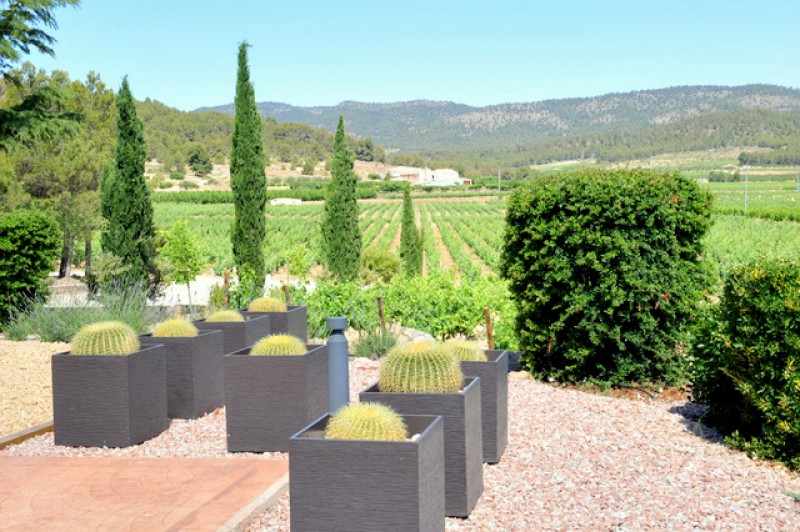
Environmental sustainability and carbon footprint
Bodegas Lavia places great importance on the issue of sustainable and environmentally friendly production techniques, and on minimizing the carbon footprint left by their economic activity.
At the same time, the winery specializes in quality rather than quantity, and makes use of the latest technology in its production and maturing plant, where the relatively small tanks are made of oak and stainless steel and contain between 5,000 and 10,000 litres.
The layout of the production plant is such that maximum use is made of gravity to minimise the carbon footprint of the company, with the crushed grape juice falling from the highest part of the building to the areas below without any unnecessary use of electricity or other devices to transport it there. Once in storage, the wine is kept in cellars which are kept cool by a lavender garden planted on the roof.
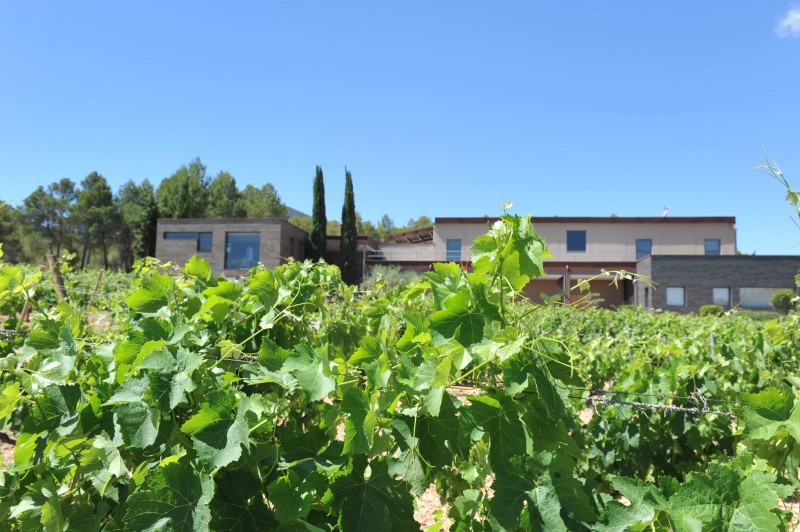
A similar example of the policy of sustainability is the use of techniques to encourage bats to nest in among the vines: this is because the bats feed on mosquitoes and other insects which can soon turn a good harvest into a disastrous one if left to their own devices.
Similar attention is also paid to packaging and transportation, reducing the carbon footprint of the Bodega Lavia product.
As a final demonstration of how modern technology and design are combined with the tradition art of viniculture, it’s necessary to look no further than the outside of the production, office and reception building. Set into the hillside next to a pine grove, it blends perfectly with its surroundings, and from inside the views over the vineyards and the landscape of Venta del Pino are impressive to say the least.
The installations are unashamedly modern and chic, the emphasis on quality and the price point of the wine reflecting the efforts made to ensure the product is ecologically friendly and of the highest quality.
Bodegas Lavia is part of the MG Wines Group.
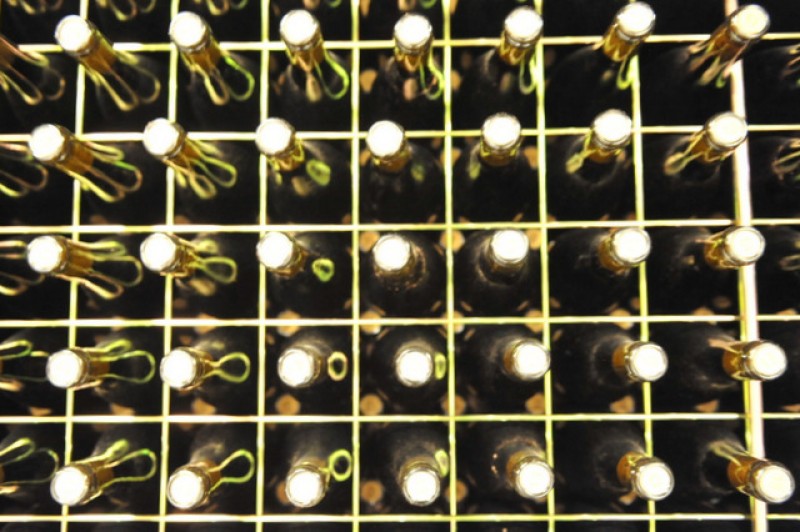
Lavia wines
Bodegas Lavia currently produces three wines, namely Lavia, Lavia + and Finca Paso Malo, all three of them red and based on the use of Monastrell grapes.
Grapes are all harvested by hand and in 15kg crates.
Lavia is described as velvety red in colour with a hint of violet, and has an intense aroma with nuances of eucalyptus and liquorice.This is made from a blend of Monastrell and Syrah, using 16 year old Syrah vines and 40 year old Monastrell vines. The wine is matured for 12 months in French oak.
Lavia + is similar in colour with a strong balsamic aroma derived from its storage in French oak casks, while its taste includes suggestions of almond and even pepper. Made entirely from Monastrell. The product is 100% ecological, Vines average 41 years in age and are grown at an altitude of 750 metres and are grown in chalky soil, with little organic matter.The wine is aged for 12 months in French oak.
Lavia + Finca Paso Malo is once again velvety in colour, and its lengthy maturing period allows it to develop an interesting array of aromatic nuances, including rosemary and even cigar tobacco. Only between 1,000 and 2,000 bottles of Paso Malo are produced per year, making it an exclusive product.
The wine is produced from 50 year old Monastrell vines, grown at 800 metres. Fermentation is undertaken in 500 litre oak casks, and the wine is aged for 18 months in French oak.
Between 60 and 70 per cent of production at Bodegas Lavia (some 65,000 bottles in a normal year) is bound for export, with the main markets being those of Japan, northern Europe, Germany and Canada.
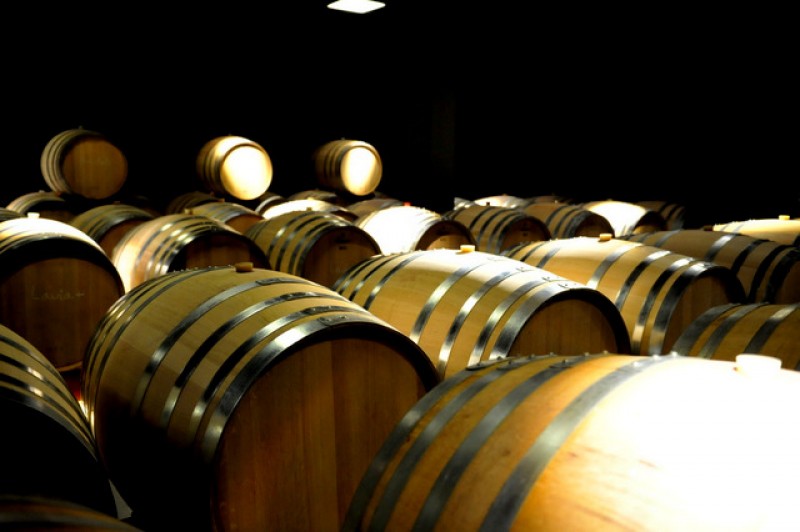
Guided tours and visits
Bodegas Lavia offers various wine tourism packages, but a basic visit of the vineyards and the production plant costs 4€ per head (minimum six people) and lasts for approximately 60 minutes. This tour includes a tasting of the Lavia 2010 wine in the beautifully designed modern reception area of the production plant.
A second option is a guided short walk through the vineyards followed by a tour of the installations. This tour lasts between one and one and a half hours and costs 15€, including a tasting of Lavia and Lavia +.
A third option comprises a longer guided route through the vineyard of the area, tour of the installations and sampling of Lavia and Lavia+. This tour takes between 3 and 4 hours and costs 30€.
Tours can be arranged in English if advance warning is given, although the standard visit is in Spanish.
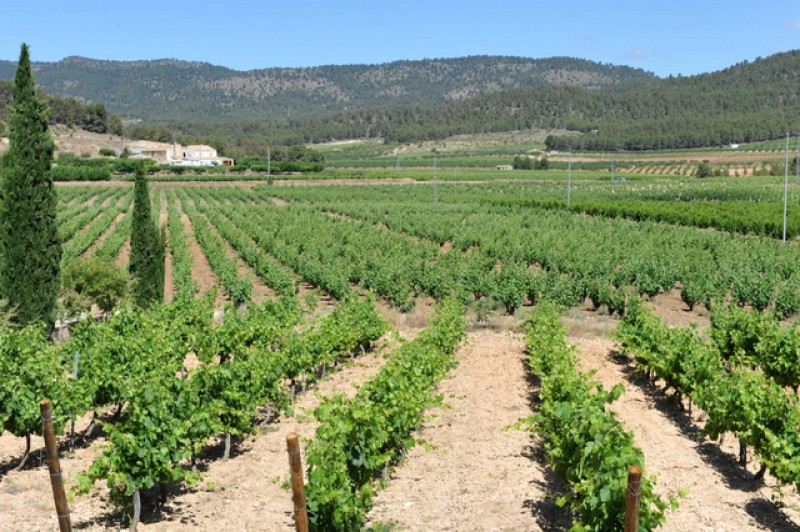
How to get to Bodegas Lavia
Those visiting Bodega Balcona should do so by heading south-west out of the town of Bullas on Calle Mediodía, which as it leaves the built-up area changes name to Calle Nº 10.
Follow this rural road for 7 kilometres, at which point the track to Bodegas Lavia is indicated by a red sign on the left.
Contact details for bookings:
Paraje Venta del Pino, Parcela 38 Cehegín
Tel: +34 638 046 694
Further information about booking visits to the Bodega and other bodegas within the Bullas D.O can be found in the dedicated Bullas section
Contact Murcia Today: Editorial 000 000 000 /
Office 000 000 000

